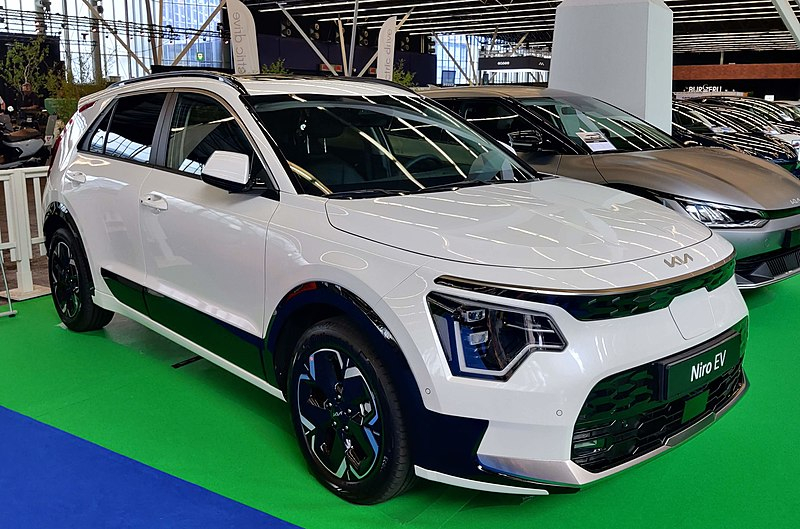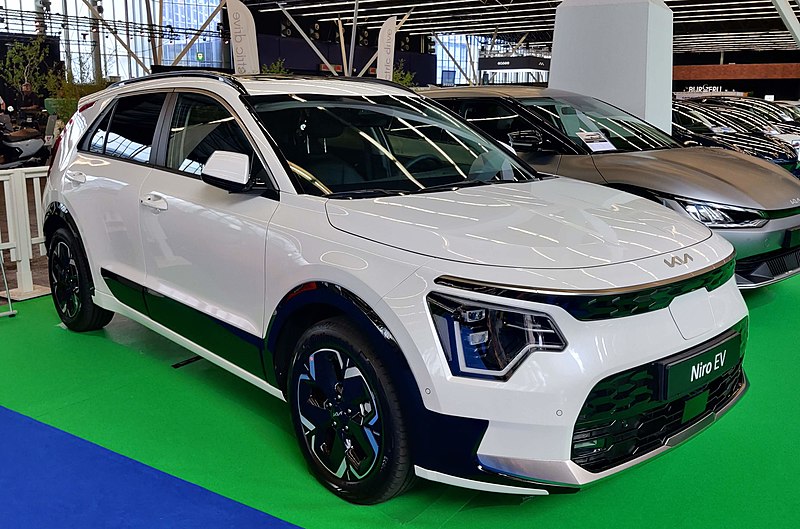Remember when everyone you knew suddenly had a smartphone? The transition happened slowly at first, and then all at once. It started with the iPhone (“there’s an app for that!”), which the cool kids and the tech bros were quick to embrace, while most of us thought it was just an expensive fashion statement. I did, anyway.
But then all the phone companies were making smartphones, and more and more friends had one, and the advantages became more and more apparent, and the next thing you know, we were all sold. The superiority of the product was undeniable.
Electric vehicles are partway along the same trajectory. Early adopters have been zipping around in their Teslas for 10-plus years, while the rest of us have been sitting on the sidelines, skeptically awaiting further data. And waiting for prices to come down.
Which brings us to the present moment. EV sales are increasing exponentially, a third of Americans say their next car will likely be electric, and the economics of buying an EV are becoming much more favorable. What’s more, new government incentives now make EVs more affordable for regular working folks.
A year or two ago, amid supply-chain shortages, you had to get on a waiting list for most EV models. Now there’s an oversupply, and competition is driving prices downwards. The auto industry might be having heartburn, but it’s good news for consumers.
Maybe, like me, you can’t afford a new car. There’s good news for you too. What with all the EVs sold in recent years, there’s a growing market in used EVs; a dealership in Grand Junction, Sun Rabbit, even specializes in them.
Meanwhile, tax breaks on EVs — which previously favored the wealthy — have recently been shifted in significant ways to help a broader range of people.
Starting with the 2023 tax year, you’ll be able to claim a federal credit of up to $4,000 for buying a used battery-electric or plug-in hybrid car priced under $25,000 from a dealership. With an income cap of $75,000 for individual filers ($150,000 for a couple filing jointly), this tax break is designed to make electric vehicles more accessible to the general public.
The state of Colorado has also made some changes to level the playing field. To help buyers at the low end of the market, starting Jan. 1 Coloradans will be able to claim an extra $2,500 tax credit on the purchase of any EV with a manufacturer’s suggested retail price under $35,000. That’s in addition to the already generous $5,000 state credit available on all EVs.
And now a new program really sweetens the pot for low- to middle-income residents. Launched in August, the Vehicle Exchange Colorado (VXC) Program is basically a version of “cash for clunkers.” It’s offering an extra $6,000 off a new EV, or $4,000 off a used one, to anyone earning less than 80% of their area’s median income. All you have to do is trade in a gas or diesel vehicle that’s registered to you and is at least 12 years old and still runs, regardless of the vehicle’s actual value.
When you add it all up, an income-qualified Coloradan stands to get a discount of up to $8,000 on a used EV, and as much as $18,500 on a new EV (and that will rise to $21,000 in January). Suddenly, an EV starts to look more affordable than a conventional car.
Governments often use carrots and sticks to achieve policy goals. The goal here is to reduce emissions, and replacing fossil-fuel vehicles with electric ones is part of the strategy. Targeting incentives where they’ll make the most difference is fiscally smart, and making them equitable gives more people a stake in the transition.
As for the rationale of offering cash for clunkers, let me offer an analogy. If you were trying to lose weight, you might resolve to eat more vegetables and low-calorie foods … but it would probably also be a good idea to eat fewer donuts. Likewise, if the goal is to reduce emissions, it makes sense not only to encourage clean vehicles but also to take some dirty ones off the road.
The electric vehicle transition is now well past the early adopter phase. The technology is reliable, the market is maturing, EVs are close to reaching price parity with conventional cars, and when you factor in the incentives they’re actually cheaper. Meanwhile, consumers are becoming more comfortable with EV charging as they understand it better and as the network of public charging stations expands.
Unlike the transition to smart phones, the EV one will take decades. Cars are much more expensive and long-lasting, so we don’t replace them as often. But if you’ve been waiting for the right moment to go electric, this might just be it.
Dave Reed is communications director for Carbondale-based Clean Energy Economy for the Region (CLEER), a nonprofit with a mission “to accelerate the transition to a clean energy economy, increase energy independence and reduce our contribution to climate change.” He can be reached at [email protected] 




